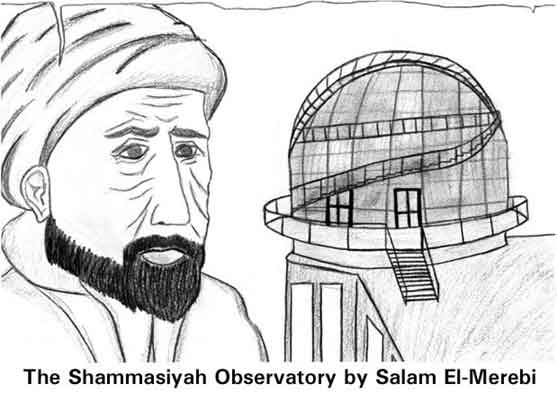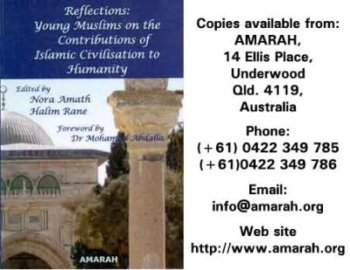
Prior to the advent of Islam and the expansion of the Islamic empire, Arab knowledge of astronomy was largely limited to navigation by celestial bodies and also “limited to the division of the year into precise periods on the basis of the rising and setting of certain stars”.[2] However, once discovering Islam, as well as Greek, Persian, and Indian texts dealing with astronomy, many of the Muslim scholars began their own studies and so the science of astronomy in the Arab world was born.
It is assumed that the works of second-century Greek author Ptolemy, especially the famous work titled Almagest, was highly influential on Arab astronomy from its humble beginnings until the eventual end of the successful age in the 16th century. This is hardly surprising as Almagest was considered “the highest achievement in Hellenistic mathematical astronomy and one of the greatest achievements of all Hellenistic science”. Sources indicate that at least four Arabic translations of Almagest existed, and two are still present today.[3]
It is also important to note that although Muslim astronomers did base their research on many of Ptolemy’s works, they did come across other theories and methods of implementation. By studying ideas postulated by the Greek author, they were able to find faster and more effective trigonometric methods and formulate their own. It was this inquisitive and challenging manner that brought about great changes in astronomy.
One of the most well-known aspects of Islamic astronomy was the observatories constructed during the Golden Age of Islam. The very first observatory, known as the Shammasiyah observatory, was built in Baghdad in 828 under the rule of Caliph al-Mamun.[4] The astronomers involved undertook various observations of the sun, the moon and the planets, and compiled a book titled al‑Zij al-Mumtahan.[5]
The observatory in Samarqand, constructed by ruler Ulugh Beg, was also of significance to Islam and the world. It was here that the Gurkhanid Emphemeris, a famous set of astronomical tables, was created. These tables concerned observational astronomy, including “sections on diverse computations and eras, the knowledge of time, the course of the stars, and the position of the fixed stars”.[6] It was such a masterpiece that it was translated into French, English, and Latin, and was widely acknowledged throughout Europe.[7]
It is believed that the last few observatories built and run by Muslims were by Jai Singh, who was a prominent astronomer in India. He built observatories in Delhi, Jaipur, Ujjain and many other cities, and the architecture of each were far more advanced than others of the time. The construction of each observatory was a large financial undertaking, and it was seen by many as a “royal institution” due to kings, princes, and wealthy people demanding its services.[8]
Astrolabes, defined as “very ancient astronomical computers for solving problems relating to time and the position of the sun and stars in the sky,”[9] were also an important part of Islamic astronomy. Although the Greeks were the original inventors, it was the Arab scholars in the 9th century who began making improvements on the earlier model.[10] They were used regularly to ascertain the direction towards Mecca, the times of sunrise, sunset, and all other times of prayer,[11] as well as using various forms of the instrument to assist in navigation.[12] As time passed, astrolabes also grew in size to reduce the chance of error,[13] and so the results of the observations made were considered far more important than the appearance and simplistic use of the instrument itself.
It is believed that Ibrahim al-Farazi was the first Muslim astronomer to have constructed the astrolabe; he is credited with this in many places worldwide. Of course, his was not the only significant contribution, nor was he the only one to have used it. Al-Battani used the astrolabe to calculate the length of a solar year, the longitude of the sun’s apogee, the “obliquity of the ecliptic,” and the length of each of the four seasons. Abu’I-Abbas Ahmad Ibn Muhammad Ibn Kathir al-Farghani (d.833) calculated the diameter of the earth in addition to the sizes and distances of the planets. Abu’I-Hasan Ali Ibn Abd al-Rahman Ibn Yunus (d.1009) made many observations on the stars and planets, and it was his work that was used by Simon Newcomb in his lunar theory.[14]
Newcomb was not the only astronomer to have used the products of Arab astronomy. A deep analysis of the works of Nicolaus Copernicus showed he relied greatly on many of the theorems and calculations Arab astronomers had devised, and had even integrated many into his own. One such example is the discovery of the Urdi lemma and the Tusi couple, two extremely famous theorems of the Arab era, in Copernicus’ model for lunar motion. The astronomers who created these theorems, Mu’ayyad al-Din al-Urdi and Nasir al-Din aI-Tusi, were not acknowledged by Copernicus perhaps due to the fact that “Muslims were not popular in sixteenth-century Europe”.[15] Ibn al-Shatir was also another Arab astronomer who Copernicus drew inspiration from; he devised a model combining the Urdi lemma and the Tusi couple similar to Copernicus’ model 150 years previously.[16]
All of these contributions, particularly the establishment of the observatories and the advancements in the astrolabe’s design assisted Muslims in ways that we can barely imagine. The astrolabe allowed the Muslims of the time to determine the direction of the Qibla [17] and the times of each prayer, both of which are extremely important. The observatories were used not only to make observations on stars but to also observe the new moon and work out when the next month begins.
Astronomy was important not only to the Muslims, but to the people of the modern world. It allowed people to observe the heavens, record the positions of stars and planets, calculate the distances separating each planetary body, determine how far a certain place is from a given coordinate and how long it would take to get there, and many other ways to find out information. Many of these Arab astronomers dedicated their entire lives to uncovering the ‘secrets of the universe’, and it is about time we give them the credit they have always deserved.
NOTES:
1. Compact Oxford English Dictionary, Ask Oxford: Astronomy, Oxford University Press, http://www.askoxford.com/concise_oed/astronomy?view=uk (5/12/06).

 Home | Aims and Objectives of Solidarity Philippines Australia Network | About Kasama
Home | Aims and Objectives of Solidarity Philippines Australia Network | About Kasama 
Search the SPAN Web